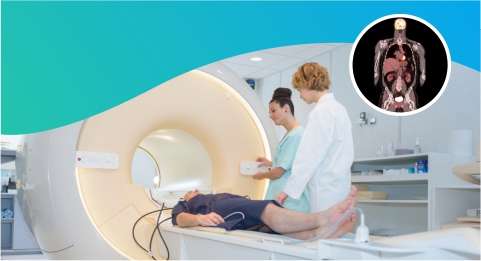
Diagnosing Dangerous Blood Clots with PET/CT Imaging The consequences of a new-fangled study suggest that PET/CT imaging may do an enhanced job of helping doctors diagnose hazardous blood clots than quite a lot of other...
Diagnosing Dangerous Blood Clots with PET/CT Imaging
The consequences of a new-fangled study suggest that PET/CT imaging may do an enhanced job of helping doctors diagnose hazardous blood clots than quite a lot of other methods used today.
Blood clots are usually a good thing – the configuration of blood clots stops extremely bleeding. Sometimes, though, blood clots can pose a health danger and can even be life intimidating.
These blood clots can attach to the within a blood vessel to discontinue blood from flowing through it. Clots can also smash free from the vein wall and travel to diverse parts of the body to confine blood flow there. Doctors refer to these kinds of clots universally as venous thromboembolism (VTE).
Detecting and Diagnosing Dangerous Blood Clots
To notice and diagnose VTE, doctors now use ultrasound and two kinds of computed tomography (CT): CT venography and CT pulmonary angiography. CT venography is a category of CT that allows doctors to generate images of veins, mainly in the legs. CT pulmonary angiography uses CT to produce images of the pulmonary arteries that hold blood from the heart to the lungs.
Conventional testing with ultrasound and CT securely and efficiently detects blood clots, but they are somewhat imperfect in their aptitude to recognize blood clots in veins below the knees. Furthermore, these tests may not be able to differentiate between older, more steady blood clots from newer, potentially more unbalanced emboli.
Erroneous diagnosis of VTE leads to redundant treatment with anticoagulants to thin the blood and melt the clot, which increases risks and costs to the patient. False negatives put patients at elevated risk of potentially fatal PEs.
While ultrasound, CT venography, and CT pulmonary angiography are brilliant diagnostic tools, they may not be able to differentiate old blood clots from new, potentially unstable emboli. This research suggests a dissimilar advance to imaging blood clots by using positron emission tomography (PET) scans and a fresh type of tracer.
PET scans are a category of nuclear medicine, which means they use minute amounts of radioactive tracers to help generate images. Various cells, such as blood cells, soak up or "uptake" the radioactive materials; the PET scan then identifies the tracers to generate a picture.
PET scans use a quantity of diverse radioactive tracers, depending on what the doctor is trying to picture. In this cram, the researchers found that the 18F-GP1 tracer could notice the disparity between blood clots and the rest of the blood. In addition, the tracer showed the uptake of the tracer in the veins of the lower legs not detected with other kinds of imaging.
New Tracer Shows Promise for effortless, secure & Effective Diagnosis of VTE
The results of this novel study show that using a precise tracer with a PET scan or CT test could assist doctors in detecting, characterizing, and tracking any newly formed clots that have the probability to become a DVT or PE.
The research administered 10 patients with DVT and 10 patients with PE into the study. First, the researchers performed an ultrasound, CT venography, and CT pulmonary angiography. The consequences of the tests recognized PE in five DVT patients and DVTs and recognized DVTs in seven PE patients. In total, the tests identified DVT in 76 veins of 17 patients and established PE in 245 pulmonary arteries in 15 patients.
Next, the participants underwent PET/CT scan by means of radioactive tracers, also recognized as radiotracers, which makes the veins and blood clots easier to envisage. The authors of the study reported that all of the participants tolerated the investigation well and that nothing of the patients’ knowledgeable adverse effects.
Using the PET/CT and the 18F-GP1 tracer, the research team recognized blood clots in 10 patients with acute DVT and 10 with acute PE. The tracer exposed DVT in 16 of the 17 patients and PE in all 15. The testing reported one false-negative, which means testing was botched to discover a blood clot in the calf muscle of one patient who was suffering shortness of breath and chest uneasiness a week after undergoing knee proxy surgery.
While research is still in its untimely stage, studies like this show that PET/CT scans using 18F-GP1 tracers can precisely locate emboli and afford information on the jeopardy the clot presents. The information provided in this study can ultimately change the way doctors treat patients they suppose have hazardous blood clots.









